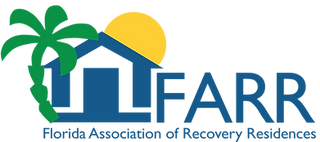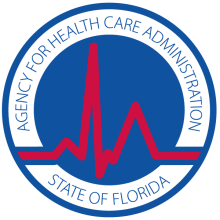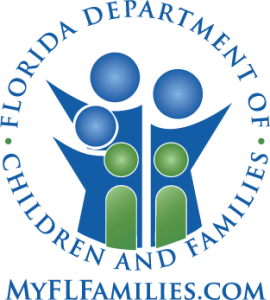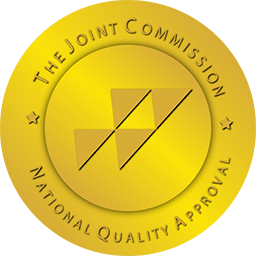The referring professional or family member remains involved in the ongoing evaluation, treatment, and continuing care substance abuse treatment programs.
Sometimes, eating disorders are accompanied by substance abuse, requiring dual diagnosis and drug treatment
Our dual diagnosis and drug treatment center is JCAHO accredited and offers a therapeutic program for eating disorder treatment in North Miami Beach. Eating disorder patients enjoy personalized programs and therapies with the following features:
- Apartment-style residences
- Board certified physicians
- Licensed clinical staff
- 24 hour on-site supervision
- Dual diagnosis program
- Most major insurances accepted
- Continuing Care and continuing recovery support

Change the Way You Look at Food and Yourself
During the day, eating disorder treatment patients attend a full schedule of group and individual activities and participate in various support groups during evenings and weekends. But unlike in a hospital setting, Transitions Recovery patients experience less restriction while still receiving the support and structure required to overcome an eating disorder. Patients participate in grocery shopping, meal preparation, and many activities that they will need to attend to throughout normal daily life.
Eating disorder patients enter Transitions Recovery drug treatment and dual diagnosis facility from all over the United States and abroad. The reputation of our skilled staff combined with North Miami Beach’s mild climate, accessibility, and local resources and attractions make Transitions Recovery a popular treatment center for those with eating disorders.
Facts about Eating Disorders
Bulimia nervosa is commonly known as binge eating. When a patient binge eats more than two times a week, they usually feel loss of control and guilt for their actions. The feelings of guilt or remorse may cause them to purge their bodies of the food. This cycle can have devastating effects physically and psychologically, while the patient does not maintain normal body weight and may severely restrict their diet.
Anorexia Nervosa
Conservative estimates suggest that one-half to one percent of females in the U.S. develop anorexia. Like all eating disorders, anorexia nervosa tends to occur in pre or post puberty, but it can develop during any life change. More than 90 percent of all those who are affected are adolescent and young women, although it can also occur in men and older women. Children as young as 7 have been diagnosed, and women 50, 60, 70, and even 80 fit the diagnosis.One reason younger women are particularly vulnerable to eating disorders is their tendency to go on strict diets to achieve an ideal figure. This obsessive dieting behavior reflects a great deal of today’s societal pressure to be thin, as observed in advertising and the media. Others especially at risk for eating disorders include athletes, actors, and models, who face thinness as a professional requirement.The term anorexia literally means loss of appetite, but this isn’t a true symptom of the disorder. In fact, people with anorexia are usually hungry, but they control their eating. This is frequently sublimated through cooking for others or hiding food in their personal space which they will not eat.Anorexia nervosa is a life-threatening eating disorder characterized by:
- Refusal to maintain body weight within 15 percent of their minimum normal weight.
- Intense fear of gaining weight.
- Distorted body image.
- Amenorrhea (absence of at least three consecutive expected menstrual cycles) in women.
Sometimes people suffering from anorexia nervosa starve themselves and then binge and purge, depending on the extent of weight loss. This can be very dangerous physically.People with anorexia nervosa usually lose weight by reducing their total food intake and exercising excessively. Many restrict their intake to 1,000 calories a day or less. Most avoid fattening, high-calorie foods and eliminate red meat or meat altogether. The diet of someone with anorexia may consist almost completely of low-calorie vegetables like lettuce and carrots or popcorn.Even those without extreme weight reductions yet presenting a preoccupation with food and weight can benefit from exploring their cognitive and relationship skills and attitudes toward food and their body.
Common Symptoms of Anorexia Nervosa.
The hallmark of all eating disorders, including anorexia, binge eating disorder, and compulsive eating, is denial and preoccupation with food and weight.One of the most frightening aspects is that those with anorexia continue to think they look fat, even when they are bone-thin. Their nails and hair become brittle, and their skin may become dry and yellow. Depression is common in patients suffering from this disorder. re People with anorexia often complain of feeling cold and may suffer hypothermia because their body temperature drops. They may develop long, fine hair on the body as it tries to conserve heat.People with anorexia develop unusual food habits such as cutting their food into tiny pieces, refusing to eat in front of others, or fixing elaborate meals for others that they themselves won’t eat.
Causes of Anorexia Nervosa.
Knowledge about the causes of anorexia is inconclusive, and the causes may be varied. But in an attempt to understand the origins of eating disorders, scientists have studied the personalities, genetics, environments, and biochemistry of people with these illnesses. Certain personality traits have been found in common among those with anorexia: low self-esteem, social isolation, and perfectionism. They tend to be good students and excellent athletes.Eating disorders also tend to run in families, mostly affecting female family members. A girl is 10 to 20 times more likely to develop anorexia, for instance, if she has a sibling with the disease. This finding suggests that genetic factors may predispose some people to eating disorders or acceptance of the social ideal of thinness.Behavioral and environmental influences may also play a role. Eating disorders are seen primarily in Western and industrialized countries, where slimness is the model of attractiveness. Stressful events are likely to increase the risk of eating disorders as well, but this is also the case for all psychiatric disorders.In studies of the biochemical functions of people with eating disorders, scientists have found that the neurotransmitters serotonin and norepinephrine are decreased in those with anorexia, which links them with patients suffering from depression. This link is supported by studies showing that certain antidepressants can be used to successfully treat some people with eating disorders.People with anorexia also tend to have higher than normal levels of cortisol (a brain hormone released in response to stress) and vasopressin (a brain chemical found to be abnormal in patients with obsessive-compulsive disorder). Other psychiatric disorders can occur together with anorexia, such as OCD, self mutilation, or bipolar disorder. However, people with anorexia nervosa have responded minimally to antidepressants. The most effective strategy for treating a patient has been weight restoration to within 10% of normal weight together with individual and family therapy.
Medical Complications
Starvation can cause damage to vital organs such as the heart and brain. Breathing, pulse, and blood pressure rates drop, and those suffering from anorexia nervosa may experience irregular heart rhythms or heart failure. Nutritional deprivation causes calcium loss from bones, which become brittle and prone to breakage. In the worst cases, people with anorexia can starve themselves to death. Eating disorders have among the highest mortality rates of all mental disorders, killing up to 6 percent of their victims.
Eating Disorder Treatment
- Psychotherapy helps deal with underlying emotional issues, as they are often the most important component of any treatment plan for eating disorders. Psychotherapy encourages the patient to talk with a trained professional, who can help the patient manage their triggers and cope with the disorder.
- Cognitive-behavioral therapy may be used to change abnormal thoughts and behaviors. This form of psychotherapy treatment focuses on managing thoughts, behaviors, and feelings related to your eating disorder. It seeks to help the patient work through the distorted thoughts that keep them from eating healthily.
- Group or family therapy lets people share their experiences with others. During this therapy, your family will help you restore healthy eating habits, as well as encourage you to get back to a healthy weight.
- A physician may prescribe medications useful in treating the disorder. The most common medication for eating disorders includes antidepressants, which can reduce symptoms of anxiety or depression.
- A nutritionist can advise the patient about proper diet and eating regimens. They will develop a plan that helps you maintain healthy eating habits.
Our programs at Transitions Recovery involve treatment and care for all aspects of the individual suffering from eating disorders and/or substance abuse, including biological, psychological, social, spiritual, and emotional. By treating the patient as a whole person, we can address the comprehensive scope of the eating disorder, including body image, medical complications, and the chronic nature of eating disorders. Our comprehensive program for eating disorders and/or drug treatment focuses strongly on experiential therapy, reducing shame, understanding the disease concept, and recovery through the 12 Steps. A fitness goal is set for patients of eating disorders, to foster a healthy relationship with exercise. A fitness specialist helps each patient develop a program with appropriate boundaries to meet fitness goals, to assist patients in overcoming fears, misconceptions, and unhealthy exercise behaviors. Anorexic and bulimic patients take a body composition test to determine their body fat percentage. Patients are taught that body fat is necessary physiologically and their healthy range. This measurement provides concrete terms to help explain the issue of starvation or binging and the effects on the body beyond weight gain or loss. It’s important that people with eating disorders be diagnosed and treated as soon as possible, as treatment is most successful when diagnosed early. Some patients can be treated as outpatients, but some may need inpatient care to stabilize their dangerously low weight. Most patients will regain the weight at a rate of 1-3 pounds per week, and most complications experienced by those with anorexia nervosa are reversible upon weight gain.







